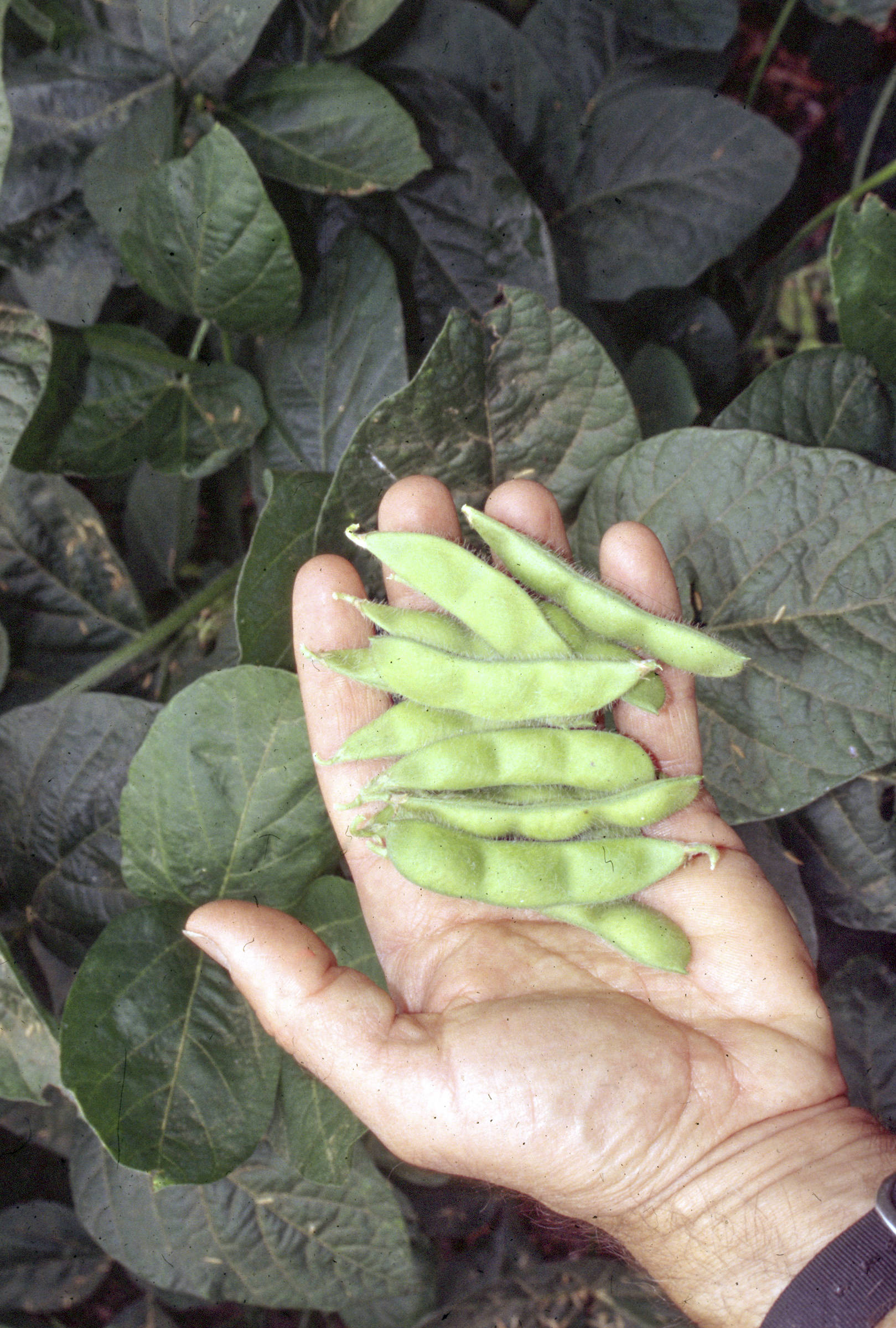Move over, tempeh, tofu, miso, soy sauce, soy milk and other processed soy foods. Make way for edamame.
This is the soybean in its most primitive state — picked young and green, steamed or boiled for five minutes, then popped out of the pod right into your mouth.
With high-quality protein, phytoestrogens, and a good dose of calcium and vitamin A, soybeans have always garnered high praise as a nutritional powerhouse. Generally though, the taste of dry (mature) soybeans — either nondescript in processed foods or left more to itself — leaves something to be desired. Boiled soybeans have a flavor and waxy texture that many people find unpleasant. And tofu is most esteemed for its ability to pick up other flavors.
Edamame, on the other hand, are delectable in their own right, combining the best of garden peas and lima beans in both flavor and texture.
Great flavor, easy to grow
Planting edamame yourself is the most straightforward way to get this vegetable, long popular in Asia, on your plate.
Although they taste like peas and limas and grow much like green beans, edamame are as easy, or even easier, to grow than these familiar vegetables. Edamame tolerate summer heat better than garden peas, which languish in most regions by early or midsummer. And they withstand cool summer nights better than lima beans, which might languish until midsummer, or all season, depending on the region.
Like green beans and other legumes, edamame roots partner with naturally occurring symbiotic bacteria that enrich the soil with nitrogen from the air.
However, like these other plants, edamame are a tasty dessert to rabbits and deer.
Mexican bean beetles, on the other hand, have little interest in soybeans.
When to plant
Don’t get all enthused about edamame and go out and plant them tomorrow. That may be too early, depending on where you garden. Edamame need warm soil to get started, so should not be planted until about the date of the last killing frost, which is about the same time as you would plant corn or green beans. (Contact your county Cooperative Extension office for that date if you don’t know it.)
Do get your seeds now, though. A number of varieties are available, differing slightly in flavor and in how long it takes before the beans are ready for harvest. My favorite variety is Shirofumi, but I also like Envy and Butterbean.
When it’s time to plant, sow the seeds an inch deep in rows 15 to 30 inches apart.
Harvest on time
The best-quality edamame demand timely harvest. Picked prematurely, the pods yield scrawny beans of bland flavor; picked too late and the pods are too far on their way to becoming dry, mature soybeans.
Harvest edamame pods when the beans within are fully plump, and before the bright green pods begin to yellow. I pick ripe pods over the course of a couple of weeks or so, but some gardeners wait until the bulk of the pods are ready for harvest, then pull the plants and strip off the pods in the comfort of a shaded chair.
If plants yield more than you can eat, freeze excess for later use. The five-minute steaming or boiling that readies pods for fresh eating also readies them, once cooled, for the freezer.

